European Day of Parks 2024: Vote for Nature!
Every year, on the 24th of May, EUROPARC organises the European Day of Parks (EDoP). It’s a day for Parks and Protected Areas to celebrate across Europe and welcome people into these beautiful places. This year, we ask you to “Vote for Nature”!
European Day of Parks 2024: Vote for Nature
Nature is important to us all.
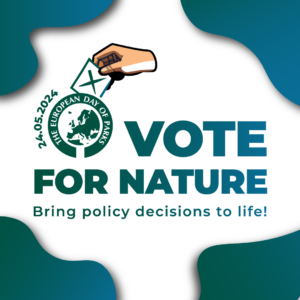
The official EDoP 2024 banner!
It’s therefore essential, to raise our voices, concerns and take action to secure a healthy future for people and nature.
We can show our support and concerns for nature in many ways, by influencing decisions that are made. However, in 2024, European citizens get to vote on a new European Parliament. A significant event for the future of the European Union – and beyond.
So, whether you are voting in the European elections this year, or any upcoming national or regional elections, or if you just need to influence better decisions for your Park and Protected Area – it’s time to “Vote for Nature”!
In this year’s European Day of Parks, the EUROPARC Federation wants to highlight just how essential our Protected Areas are for the development and implementation of nature policies & their central role in ensuring a sustainable and resilient society for European citizens to live, work and enjoy. Let us all #VoteForNature and give some well deserved support to our natural heritage.
Europe’s Parks and Protected Areas bring policy decisions to life!
Protected Areas are builders of bridges. These places have the ability to connect international policy decisions and agreements with local communities. Furthermore, they are essential not just for the successful execution of these policies, but also help shape wide-spread acceptance amongst citizens.
However, the benefits Parks & Protected Areas bring go far beyond the execution of global, national or even regional nature policies. These places safeguard some of the most spectacular nature in Europe. Every day, they provide us with fresh water, clean air and places to unwind, whilst fostering sustainable regional development.
That is why, on and around the 24th of May, we invite you to organise events that showcase exactly that!
Need some inspiration?
As always, we’ve created extensive guidelines to help Parks and Protected Areas get started:
The official “Vote for Nature” banner is available in different formats and languages as well. You can download it here:
Download the banner in your language
Is your language not yet there? Do you require it in a different format? Then don’t hesitate to reach out to us! Write us an email with the correct translation and we will be happy to create it for you. You can also request the byline “Bring policy decisions to live”.

Lets make some noise…
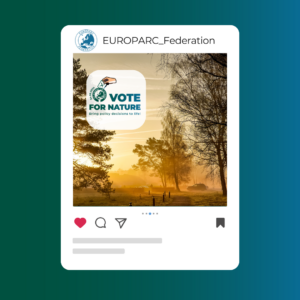
Raise your voice on social media!
The European Day of Parks is all about getting people out into nature and promoting Europe’s Protected Areas. However, we cannot underestimate the power of social media. That is why this year we ask you to ‘make some noise’ on social media on the 24th of May. Put the “Vote for Nature” European Day of Parks logo on a picture of your Park and post on social media with #VoteForNature. Take the opportunity to highlight why your Park or Protected Area deserves all the (political) support it can get!
Be sure to tag the EUROPARC Federation on Facebook & X @EUROPARC; Instagram @EUROPARC_Federation; LinkedIn @EUROPARC Federation when you post!
A special social media pack with sample messages, as well as the stand-alone logo, will be shared one month before the European Day of Parks.
We look forward to seeing your events, posts and activities!
About the European Day of Parks
Imagine a day when all Parks and Protected Areas come together across Europe, to celebrate their successes and declare the value and benefits of Europe’s Protected Areas to communities, decision-makers and the wider public. That is EUROPARC’s European Day of Parks!
Every year, European Day of Parks takes place on and around 24th of May. It aims to bring people closer to nature and raise public awareness on the importance of the natural beauty preserved in Protected Areas and the importance of conservation and sustainable management of those places.
Check here to see the previous editions.
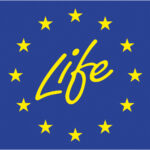 The European Day of Parks is made possible through funding of the LIFE Programme. Views and opinions do not necessarily reflect that of the European Commission or of CINEA.
The European Day of Parks is made possible through funding of the LIFE Programme. Views and opinions do not necessarily reflect that of the European Commission or of CINEA.
European Nature Academy Mini-Courses have started!
The courses will run February to March 2024
The time has come!
The second European Nature Academy intake has officially started their learning journeys with the Online Induction Seminar.
A total of 107 Participants from more than 30 Countries got together to meet, collaborate and get familiar with the Mini Course Programme, as well as their Trainers.
Based on their professional backgrounds, skills and interests indicated during the application process, selected participants have been organised in five European Nature Academy “Houses” – these focus on competence-based applied learning for marine and forest ecosystems, core communication skills, inclusive stakeholder engagement and governance, policy frameworks and more.
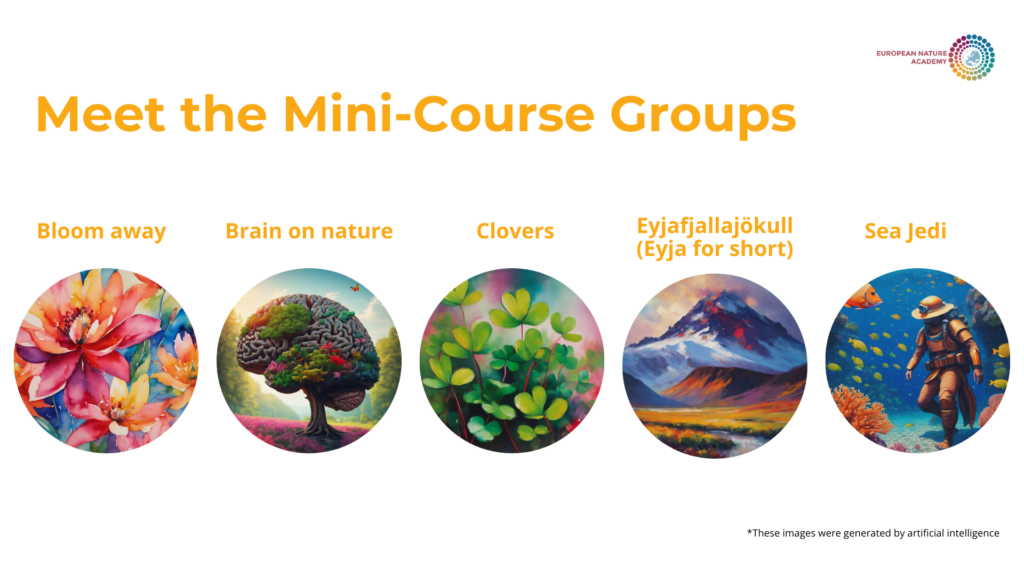
ENA Mini-Course Houses
We are incredibly proud and happy that ENA’s Trainee Trainers have this opportunity to share the knowledge they gained during the first round of courses. They will work together with the new intake of participants and we wish them every success during their ENA journey!
Master’s Programme Management of Conservation Areas: Applications Now Open!
Lake Weissensee in Carinthia © FH Kärnten, CUAS
The prestigious “Management of Conservation Areas (MCA)” master degree programme is now open for applications again at Carinthia University of Applied Science in Austria. Starting September 2024, 22 coveted openings are available for students worldwide. This successful programme promises inspiring learning experiences in 21st-century nature conservation. EUROPARC is a long-standing member of the Advisory Board of the Master’s programme.
About the Master Programme
Conservation areas, such as national parks, heritage sites and biosphere reserves, represent Earth’s most beautiful and valuable landscapes. In this international master degree program, students learn to effectively plan and manage such areas, harmonizing biodiversity protection with local interests. The curriculum imparts extensive expertise and diverse personal and technical skills.
Most students already have years of experience in the sector, whether in park management, administration, NGOs, or consulting firms. Through engagement with international peers, outstanding trainers, teachers, and researchers, students reflect on, and develop their experiences. This allows graduates to apply acquired skills to exciting career paths.
The programme, offered at the UNESCO Chair for Conservation Area Management at Carinthia University of Applied Sciences, emphasizes applied research and technology. Close collaboration with UNESCO, international conventions, institutions, universities, and various conservation areas ensures a cutting-edge curriculum. The concept of research-based teaching provides students with the latest scientific insights.
Tailored to the needs of international professionals, the programme blends intensive on-site courses, including visits to various conservation areas, with flexible online elements.
Further information about the programme and registration can be found on the webpage here.
Take the opportunity to find out more about the MCA in a personal discussion with the scientific director, CUAS Prof. Dr Michael Jungmeier. The virtual info sessions will take place on:
- Tuesday, 27th February, 05.00 PM CET ONLINE via MS Teams
- Tuesday, 19th March, 05.00 PM CET ONLINE via MS Teams
- Tuesday, 23rd April, 05.00 PM CET ONLINE via MS Teams
- Tuesday, 28th May, 05.00 PM CET ONLINE via MS Teams
- Tuesday, 25th June, 05.00 PM CET ONLINE via MS Teams
Please register for this by emailing Melina Hierländer:

You can also follow the UNESCO Chair on Sustainable Management of Conservation Areas on LinkedIn here.
New EUROPARC Podcast on Dynamic Dune management in The Netherlands!
In this podcast, EUROPARC’s Communciations Manager Esther Bossink is joined by Myrthe Fonck of PWN. Together they explore an innovative project in The Netherlands that revitalised the dune landscape in National Park Zuid-Kennemerland, The Netherlands. The podcast was recorded end of 2023.
Making dunes mobile again!
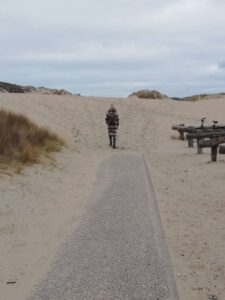
Myrthe Fonck on a sand covered bicycle lane, Zuid-Kennemerland. By Neil McIntosh
Over 10 years ago, the Dutch Dune Revival project set out to bring natural dynamics back into the dunes. These coastal areas in The Netherlands are unique. Typically, the dunes are very broad and stretch almost along the entire coastal line. Furthermore, the Dutch dunes are of great importance for the grey dune habitat — also on a European scale.
However, as the main function of dunes became coastal defence, dunes were ‘fixed’ by the planting of marram grass. This prevented wind, sand, and salt to shape the dunes and create dynamic, natural processes. As a result, the dune areas degraded and biodiversity suffered.
So, how to solve this in a country that has 26% of its land located below sea level, without risking the coastal safety? Ecologists in National Park Zuid-Kennemerland came up with a seemingly contradictory plan: create five large openings within the first row of dunes. Opening up the dunes this way allowed sand to blow into the dune system and allowed for natural processes to take place again and rejuvenate the area.
Over 10 years later, the results are in: healthy, resilient and ‘moving’ dunes, where biodiversity thrives. Recreating these natural processes even helped combat the nitrogen deposition in the area, which is one of the main threats to nature in The Netherlands.
Learn more about this Nature-based Solution where different actors came together to create a better result for nature and for people, in this new episode of EUROPARC’s podcast “Voices from the Parks”.
You can also find us on Spotify!
Future-proofing the Dutch dune area
In National Park Zuid-Kennermerland, PWN strives to create natural spaces that are future-proof. The dynamic dune management improves biodiversity, but also supports the area in adapting to climate change. If you want to learn more about climate change adaptation s methods in the Dutch dunes, check out this Climate Talks episode, created within the LIFE Natur’Adapt project.
 EUROPARC Podcasts ‘Voices from the Parks’ is funded by the European Union. Views and opinions expressed are however those of the author(s) only and do not necessarily reflect those of the European Union or CINEA. Neither the European Union nor CINEA can be held responsible for them.
EUROPARC Podcasts ‘Voices from the Parks’ is funded by the European Union. Views and opinions expressed are however those of the author(s) only and do not necessarily reflect those of the European Union or CINEA. Neither the European Union nor CINEA can be held responsible for them.